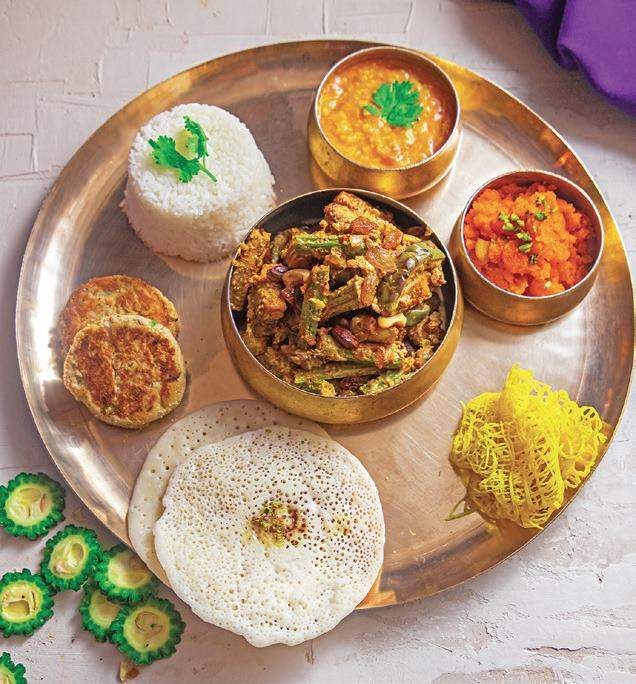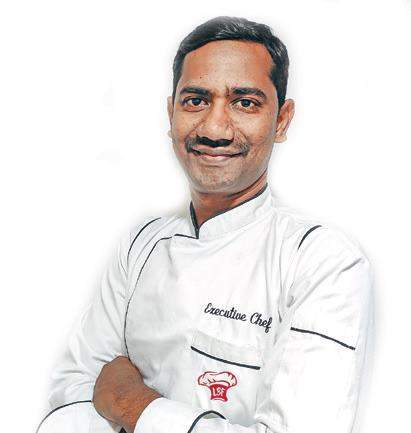Murshidabad, WEST BENGAL :
Murshidabad, the seat of Mughal power in Bengal, serves up an impressive cuisine

Mention Murshidabadi cuisine, and many foodies would look at you wonderingly. A well-kept secret, this district, which in the 18th century was a Mughal seat of power and ruled over undivided Bengal, Bihar and Odisha, can surprise you with its subtle flavours. Executive Chef Syed Mustaque Murshid, a descendant of one of the earliest settlers in the region, introduced some signature dishes from the Murshidabadi platter to the Delhi palate at Zambar, Ambience Mall, Gurugram, during a weeklong Murshidabadi Utsab this month. Tracing his roots to 23 generations, Murshid learnt cooking from his mother.
He says, “Murshidabadi cuisine is one of the oldest cuisines of India. Being a chef from Murshidabad, I want the masses to know more about this and reassert that West Bengal is more than just Bengali cuisine. Food has always been known to break barriers between communities and Murshidabadi cuisine is the best example of how we slowly imbibed the Persian culture and married it with our local flavours to come up with something delectable.”
Murshidabadi cuisine is often known as a lighter version of the rich Mughal food and like any Mughal dish, it involves the trademark slow preparation, grounding of the masalas on a sil-batta, etc. It emerged at a time when ‘Mughaliya’ cuisine—or the food that the Mughals brought with them to India—was merging with different Indian tastes and giving birth to newer cuisines. The popular Awadhi and Hyderabadi cuisine were born during this period, as were the cuisines of Rampur, old Delhi, and of course, Murshidabad.
The influence is quite apparent in dishes such as the dalchini gosht (mutton flavoured only with cinnamon), boti seekh kebab, and of course, the trademark biryani—which is actually a poorer version of its richer Mughal cousin. The biryani comes with equal portions of mutton and potatoes and is more rustic in its use of masalas, unlike the subtle aroma of the Mughal version. The tikiyas that come in a variety of kinds—from prawns, to mutton to beetroot—are a firmer version of the typical succulent Mughal kebabs. Unlike its Mughal counterpart, the most sought-after qormas in Murshidabad are vegetarian—the aloo qorma and yam qorma.
The cuisine also boasts a fair amount of Bengali influence. There is the very traditional shukto (a milky mix of vegetables tempered with paanch phoron), albeit with fried nuts and sans the bitters. There is also the bhapa maach (a steamed fish with curd, mustard and coconut). A very subtle dish, Murshid’s version was truly magnificent.
Vineet Manocha, Senior Vice President, Culinary, Lite Bite Foods Pvt Ltd, shares, “At Zambar, we strive to offer local flavours from different regions of India. Murshidabadi Utsab was in line with our philosophy to promote regional cuisines and we received encouraging response from food enthusiasts in the city.” This amazing cuisine also includes tok murgi (a sour chicken curry), savoury rice pancakes, and of course, a host of posto or poppy dishes in keeping with its similarities with the Bengali cuisine.
In fact, they also boast a posto halwa, which is often a crowd-pleaser. Unfortunately, it was not something our palate took to positively when we tasted it. Too sweet, it still retained its distinct ground flavour which goes well with savoury items. But the zarda pulao (sweet pulao) more than made up for the halwa.
source: http://www.newindianexpress.com / The New Indian Express / Home> Lifestyle> Food / by Medha Dutta Yadav / Express News Service / October 24th, 2019









